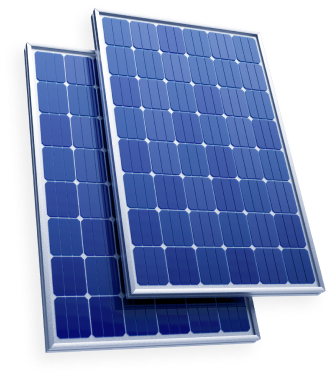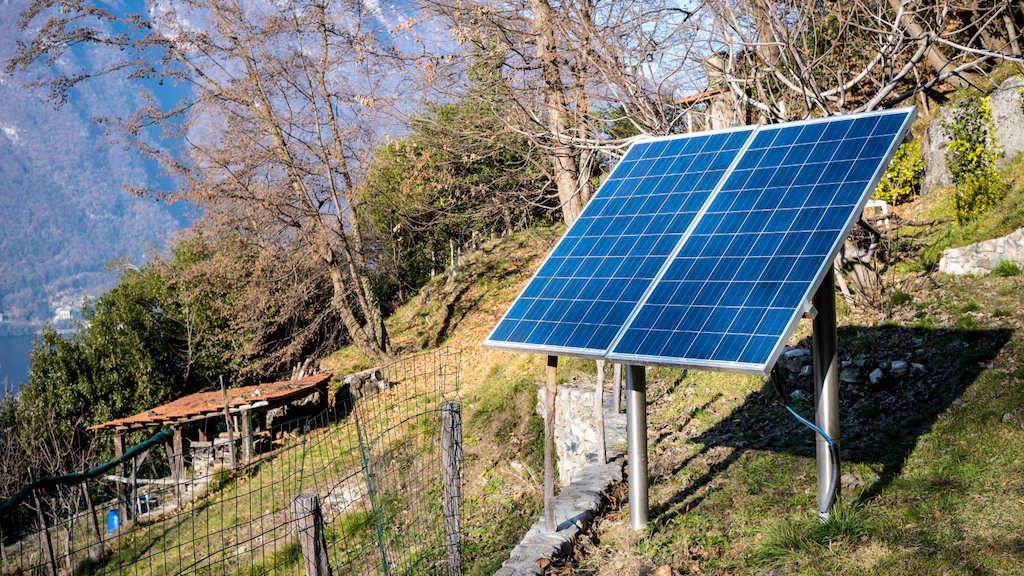Image source: Canva.com
Once considered a luxury, rooftop solar panels have become increasingly accessible. Whether your goal is to slash electric bills or reduce your carbon footprint, embracing solar power is often a prudent choice for homeowners.
Investing in solar panels offers numerous benefits, from enhancing your home’s value to curbing utility costs. However, given its significant investment, it’s crucial to evaluate its potential returns beforehand.
Here, we’ll outline the factors to consider in determining if solar is suitable for your needs and how to secure solar panels at the most competitive rates. Ultimately, success hinges on your roof’s suitability, current electricity expenses, and eligibility for incentives.
Considering solar panels?
The average U.S. household spends around $1,747 annually on electricity, a cost that balloons to $61,520 over 25 years with inflation factored in. Yet, by installing rooftop solar panels, you can substantially reduce or even eliminate these expenses.
Typically, households require an 11 kW system to fully offset their electricity usage. While the upfront investment for such a system, including installation and the federal solar tax credit, stands at $22,022 in 2024, the potential savings over time outweigh this initial cost. It’s no wonder millions of homeowners are making the switch to solar.
Transitioning to solar power is a commitment that extends over the long term. However, the actual costs and savings associated with solar energy depend on variables like your location, electricity usage, and the setup of your home.

Curious about solar panel functionality?
Without delving into intricate physics, here’s a simplified overview: Solar panels harness sunlight to generate electricity via the photovoltaic effect. It all begins with solar cells, which absorb light and release electrons, creating direct current (DC) electricity. Metal plates transfer this DC electricity to wires, which then reach inverters. These devices convert DC electricity into the alternating current (AC) used by most household appliances. And just like that, your solar panels generate clean energy for your home!
Wondering if solar is right for you?

Assess your suitability for solar to maximize the usefulness of this guide. While solar panels offer significant benefits for many homeowners, alternative approaches like community solar subscriptions can also yield savings. If you meet the following criteria, investing in solar is likely a good fit for you

Property Ownership: You must own your property. Renters or those within homeowners associations (HOAs) should consult with property owners or HOAs before pursuing solar installations.

High Electricity Costs: The higher your monthly electricity bill, the quicker you’ll recoup your investment in a solar system.

Ideal Roof Conditions: While constant sunshine isn’t necessary, an ideal roof is south-facing, sloped between 30 and 45 degrees, spacious, minimally shaded, and well-maintained. Even east or west-facing roofs can yield significant solar savings, albeit with potentially slightly reduced production.

Access to Incentives: The cost-effectiveness of solar panels depends largely on the incentives available to you, which vary by location and tax liability. Living in a state with net metering and having sufficient tax liability to benefit from the solar tax credit can expedite the breakeven point for your solar investment.
Wondering if solar panels are worth the investment?
If you’ve determined that solar is a good fit for your situation, it’s likely a wise investment to consider. However, like any significant financial decision, there are both advantages and disadvantages to weigh before committing.
Pros of solar
1. Savings on electric bills: Homeowners typically save between $20,000 and $90,000 on electricity costs throughout the lifespan of their solar panel system. Electrifying home appliances, such as heating & cooling systems, cars, or cooktops, can further reduce energy bills with solar power.
2. Increased home value: Studies indicate that having a solar panel system can boost home value by an average of 4%.
3. Reduction in carbon footprint: Solar energy production does not emit carbon dioxide or other greenhouse gases, unlike fossil fuels like coal, oil, and natural gas, thereby contributing to mitigating climate change.
Cons of solar
1. Time to break even: It typically takes around eight to ten years for homeowners to recoup their solar panel system’s cost through savings on electricity bills. However, $0-down financing options enable savings from day one.
2. Nighttime operation limitations: Solar panels require sunlight to generate electricity, rendering them inactive during nighttime hours. To address this, you can integrate a battery backup system to store surplus daytime energy for nighttime use. However, adding a battery increases the system’s overall cost.
3. End-of-life disposal challenges: Solar panel recycling in the United States is still in its infancy, leading to most panels ending up in landfills at the end of their lifespan. While efforts are underway to improve recycling processes, widespread adoption has yet to be achieved.
Selecting the ideal solar panels for your home involves considering several essential factors
Type of solar panel
You’ll encounter terms like monocrystalline and polycrystalline during your solar panel research. Monocrystalline panels feature cells composed of a single silicon crystal, are typically black, and boast higher efficiency. On the other hand, polycrystalline panels have cells made of multiple silicon crystals, are generally blue, and are more cost-effective.
Power output
Also known as wattage or capacity, the power output of your solar panel indicates the amount of electricity it generates under standard test conditions. Higher power output means more electricity production. Solar panels for typical private house range from 350 to 450 W, with the most common range being 400 to 410 W as of 2024.
Efficiency
Efficiency measures a solar panel’s ability to convert sunlight into usable electricity. Higher efficiency translates to increased electricity production. Panels quoted on SolarWiki usually range from 19.7% to 21.6% efficiency, with some top brands boasting ratings above 22%, such as SunPower’s panels at 22.8%.
Temperature coefficient
The temperature coefficient indicates how a panel’s power output decreases with rising surrounding temperatures. Lower coefficients signify better performance on hot, sunny days. For example, a coefficient of -0.26%/°C means a 0.26% decrease in electricity production for every degree above 25°C (77°F).
Lifespan & warranty:
Ensure your chosen solar panels have a long lifespan and robust warranty coverage. Most panels last 25 to 30 years, but a strong warranty adds peace of mind. Look for warranties covering manufacturing defects and performance guarantees, along with considerations like labor coverage and company reliability.
Discover the Ideal Solar System for Your Home in Just a Few Clicks!

5 steps to transition to solar energy
Embarking on your solar journey doesn’t have to be daunting. Follow these five straightforward steps to transition to solar energy seamlessly:
1. Get quotes
Comparing quotes from multiple installers is key to securing the best deal for your solar panel system.
2. Choose an installer
After reviewing your quotes, select the installer that aligns with your needs and budget. Once you’ve made your selection, carefully review the contract for cost breakdowns, incentives, equipment details, and cancellation clauses.
3. Schedule a site visit
Arrange a site visit with your chosen installer to confirm your home’s suitability for solar installation. During this step, an engineer will assess your roof and electrical panel for any necessary updates. Site visits can be conducted in person or virtually, providing flexibility to homeowners.
4. Decide on payment
Consider your payment options, whether it’s paying upfront with cash for maximum long-term savings, opting for a solar loan for immediate savings, or choosing a solar lease or power purchase agreement (PPA) for more flexibility. Each option comes with its own set of benefits and considerations.
5. Prepare for installation
Once you’ve finalized payment arrangements, your installer will handle the necessary paperwork for installation and grid interconnection. On installation day, expect a team of professionals to complete the setup, typically taking 1-3 days depending on the project’s size. Following installation, await permission to operate (PTO) from your utility before officially activating your solar system for electricity generation.
Maximize your solar investment with government incentives, such as the federal investment tax credit (ITC), which offers a 30% credit on your solar system’s upfront cost, and net metering, which allows you to receive credits for excess electricity sent to the grid. Additionally, explore state and local incentives, including tax credits, rebates, and renewable energy certificates (SRECs), to further enhance your savings and support your transition to solar energy.
Key points
Living in a warm or sunny climate isn’t a prerequisite for reaping solar savings.
The majority of homeowners can pocket tens of thousands of dollars through solar adoption.
While solar panels entail a cost, they also bring forth compelling incentives.
The optimal solar equipment for you may differ from what suits your neighbors.
You can explore solar options without ever placing a panel on your property.





